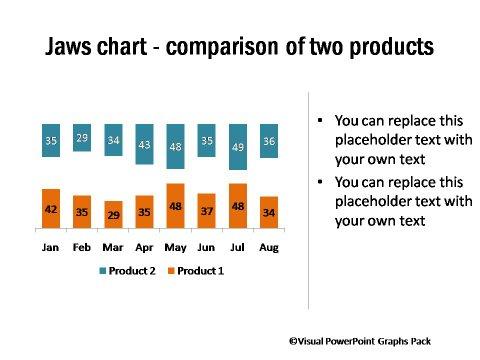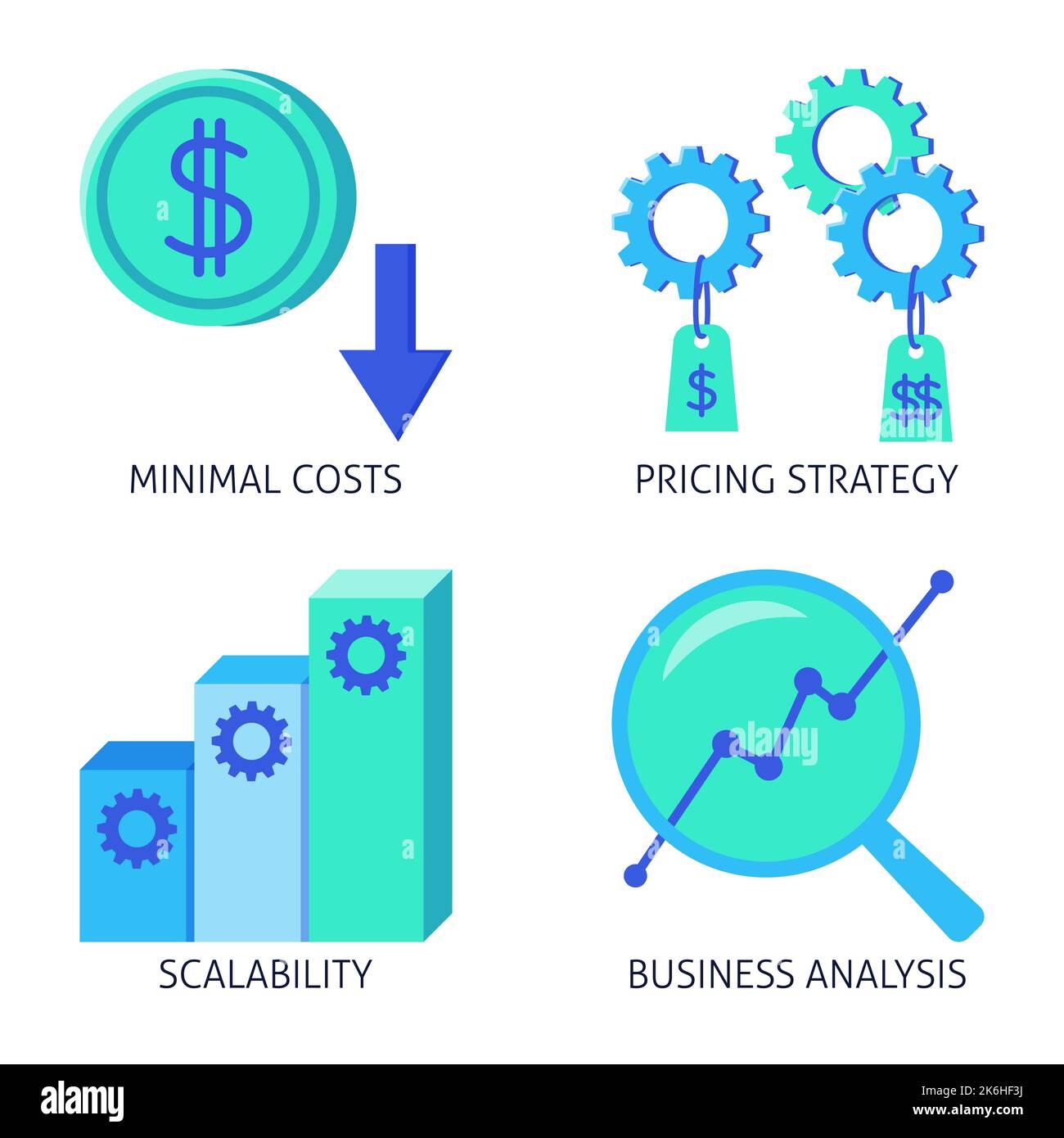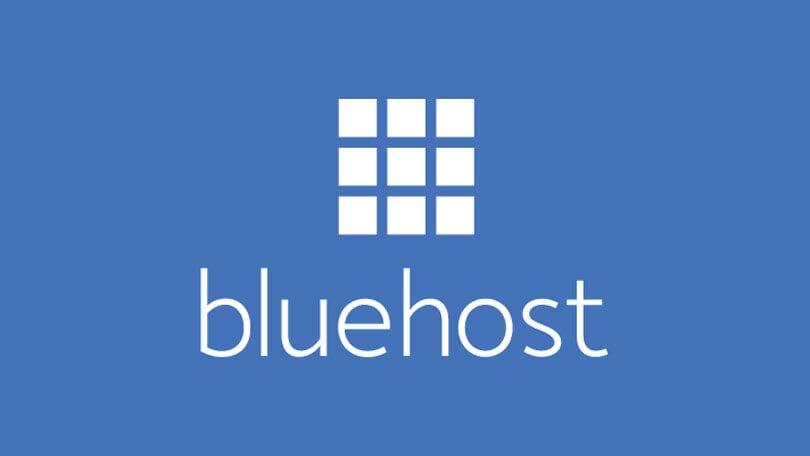Are you on the hunt for the perfect web hosting service to power your online presence? With so many options available, it can feel overwhelming to narrow down the choices. Among the top contenders in the market, Bluehost and DreamHost have consistently emerged as favorites for bloggers, businesses, and developers alike. But which one truly deserves your investment? In this 2025 update, we’re diving deep into the features, performance, pricing, and customer support of both Bluehost and DreamHost. Whether you’re a seasoned web pro or just starting your online journey, this comparison will equip you with the insights you need to make an informed decision. So grab a cup of coffee, sit back, and let’s uncover the ideal hosting solution for your needs!
Understanding the Basics of Bluehost and DreamHost
When it comes to web hosting, two of the most popular names are Bluehost and DreamHost. Both companies have carved out significant niches in the market, catering to a wide array of users, from beginners to seasoned developers. Understanding their core offerings can help you make an informed decision tailored to your needs.
Bluehost is often touted as a go-to option for WordPress hosting, thanks to its official recommendation by WordPress.org. With a user-friendly interface, Bluehost simplifies the setup process, making it perfect for those who are new to website creation. Key features include:
- One-Click Installs: Easily install WordPress and other CMS platforms with minimal effort.
- 24/7 Customer Support: Their support team is available around the clock via live chat, phone, or email.
- Free Domain for the First Year: New users can save money with a complimentary domain name.
On the other hand, DreamHost stands out for its commitment to privacy and no higher renewal rates upon contract expiration. Their services are known for being highly customizable, making it suitable for users who have specific needs. Here are some noteworthy aspects:
- Unlimited Traffic: DreamHost allows for unlimited bandwidth and traffic, which is ideal for growing websites.
- 90-Day Money-Back Guarantee: This risk-free trial period sets them apart, allowing users to test the service without hesitation.
- Integrated Website Builder: The intuitive builder helps users design their sites without any coding knowledge.
| Feature | Bluehost | DreamHost |
|---|---|---|
| Years in Business | 20+ | 25+ |
| Free Domain | Yes (1st year) | Yes (with annual plans) |
| Uptime Guarantee | 99.9% | 100% |
| Starting Price | $2.95/month | $2.59/month |
the choice between Bluehost and DreamHost boils down to your specific requirements. If you value simplicity and are focusing primarily on WordPress, Bluehost could be your best bet. Conversely, if you’re looking for unlimited traffic and a customer-centric approach, DreamHost might be the way to go. Understanding these basics will empower you to make a choice that aligns with your website’s goals and growth potential.

Performance Showdown: Speed and Uptime Comparisons
When it comes to selecting a web hosting provider, speed and uptime are two of the most critical factors that can impact your website’s performance and user experience. In this comparison, we delve into how Bluehost and DreamHost stack up in these crucial areas for 2025.
| Provider | Average Load Time | Uptime Guarantee | Support Response Time |
|---|---|---|---|
| Bluehost | 2.5 seconds | 99.99% | 15 minutes |
| DreamHost | 1.8 seconds | 100% | 30 minutes |
Bluehost has long been recognized for its reliable hosting services, boasting a commendable average load time of 2.5 seconds and an impressive uptime guarantee of 99.99%. This means that your website is nearly always accessible to visitors, ensuring that you don’t miss out on potential traffic and revenue. With support response times averaging around 15 minutes, Bluehost also offers prompt assistance when you need it the most.
On the other hand, DreamHost outshines with an average load time of just 1.8 seconds, providing a noticeably faster experience for users. Furthermore, DreamHost boasts a 100% uptime guarantee, which is a bold promise that speaks volumes about their commitment to keeping your website online. Although their support response times are slightly longer at 30 minutes, many users report satisfaction with the quality of the help they receive.
For businesses that prioritize speed, DreamHost’s faster load times give it an edge in delivering an optimized user experience. However, Bluehost’s combination of reliable uptime and quick support can be incredibly appealing for those who value accessibility and service responsiveness. Ultimately, your choice may hinge on whether you prioritize speed or comprehensive uptime assurance.
both Bluehost and DreamHost offer robust performance metrics, but selecting between the two will depend on your specific needs and priorities. Consider what matters most for your website—whether it’s maximizing load times or ensuring that downtime is kept to an absolute minimum—and choose accordingly.
User Experience: Navigating the Interfaces of Bluehost and DreamHost
When it comes to web hosting, user experience can make or break your decision. Both Bluehost and DreamHost have invested heavily in their interfaces to make navigation a breeze, but they cater to slightly different user bases. Let’s explore how each platform stacks up in terms of usability.
Bluehost Interface
Bluehost features a clean and modern dashboard that appeals to beginners. Its intuitive layout allows users to access essential tools with just a few clicks. Here are some standout features:
- One-Click Installations: Setting up WordPress or other applications is straightforward, requiring minimal technical knowledge.
- Site Management: All your websites are easily manageable from a single dashboard, allowing for seamless navigation.
- Support Integration: Access to customer support is conveniently available through the dashboard, ensuring help is just a click away.
DreamHost Interface
DreamHost, on the other hand, offers a more robust interface geared towards users with a bit more experience. While it may initially seem overwhelming, its features are designed to give advanced users greater control. Here’s what sets it apart:
- Custom Control Panel: DreamHost’s unique panel provides a wealth of tools, from domain management to advanced settings, all in one place.
- Advanced Analytics: Users have access to detailed statistics that help monitor website performance, providing insights for optimization.
- Enhanced Security Controls: The interface allows for easy management of SSL certificates and security settings, essential for maintaining a safe site.
Head-to-Head Comparison
| Feature | Bluehost | DreamHost |
|---|---|---|
| User-Friendly Dashboard | ✔️ | ❌ |
| One-Click Install | ✔️ | ✔️ |
| Advanced Analytics | ❌ | ✔️ |
| Custom Control Panel | ❌ | ✔️ |
Ultimately, the choice between Bluehost and DreamHost comes down to your specific needs and experience level. Beginners may find Bluehost’s simplicity a perfect match, while those with a bit more technical savvy might appreciate DreamHost’s depth and customizability. Whichever you choose, both platforms are designed to provide a seamless hosting experience, ensuring you can focus on what truly matters—growing your website.
Pricing Plans Unveiled: Which Host Offers the Best Value?
When it comes to choosing between Bluehost and DreamHost, understanding their pricing structures is crucial for making an informed decision. Both providers offer a variety of plans designed to cater to different needs and budgets, but which one gives you the most bang for your buck?
Bluehost Pricing Overview
Bluehost is known for its competitive pricing, particularly appealing to beginners and small businesses. Here are some highlights of their plans:
- Basic Plan: Starting at $2.95/month, ideal for individuals and small blogs.
- Plus Plan: Priced at $5.45/month, offers unlimited storage and websites.
- Choice Plus Plan: At $5.45/month, it includes additional security features.
- Pro Plan: Available for $13.95/month, perfect for more extensive business needs.
DreamHost Pricing Overview
DreamHost, on the other hand, positions itself as a more premium brand with unique features. Here’s a quick look at their offerings:
- Shared Starter: Starting at $2.59/month, suitable for beginners with one website.
- Shared Unlimited: At $3.95/month, this plan allows for multiple websites and unlimited bandwidth.
- DreamPress: Priced at $16.95/month, tailored for high-performance WordPress sites.
- VPS Hosting: Starting at $15/month, a great option for those needing more control and resources.
Value Comparison
When comparing the value of each host, it’s essential to consider not just the price, but also what you get for your money. For instance, Bluehost includes a free domain for the first year, SSL certificate, and 24/7 support in its plans. DreamHost, while slightly more expensive, offers a 97-day money-back guarantee and is known for its strong commitment to privacy, including free WHOIS privacy.
To help visualize the differences, here’s a simple comparison table:
| Feature | Bluehost | DreamHost |
|---|---|---|
| Price (Starting) | $2.95/month | $2.59/month |
| Free Domain | Yes (1st Year) | No |
| Money-Back Guarantee | 30 Days | 97 Days |
| Support | 24/7 Live Chat | 24/7 Live Chat |
Ultimately, the best value depends on your specific needs. If you are looking for affordability with essential features, Bluehost may be the way to go. However, if you value longer guarantees and privacy, DreamHost’s offerings could provide better long-term satisfaction.

Customer Support: Who Comes Out on Top in 2025?
When it comes to choosing a web hosting provider, one of the most crucial factors is the quality of customer support. Bluehost and DreamHost have long been contenders in the web hosting arena, but how do they stack up in 2025? Both companies have made significant strides to enhance their support services, but they take different approaches to ensure customer satisfaction.
Bluehost has established a reputation for its responsive customer service team, available 24/7 via live chat, phone, and email. Their support representatives are known for being knowledgeable, friendly, and efficient at resolving issues. Here’s what sets Bluehost apart:
- Multi-channel Support: Customers can choose their preferred method of communication, making it easy to get help when needed.
- Knowledge Base: Bluehost offers an extensive library of articles and tutorials, empowering users to troubleshoot common issues independently.
- Community Forums: Active forums allow customers to share experiences and solutions, enhancing the overall support ecosystem.
On the other hand, DreamHost prides itself on its commitment to customer service, focusing heavily on providing in-depth responses to queries. Their support team, also available 24/7, tends to take a more personalized approach. Here’s what makes DreamHost a strong contender:
- Responsive Email Support: DreamHost’s email support is often praised for its thoroughness and the quality of responses.
- Live Chat Option: Real-time chat support is available, allowing for quick resolutions to urgent issues.
- Expert Guides: DreamHost offers a wealth of educational resources that help customers understand their hosting environment better.
To visually compare their offerings, here’s a summary of key support features:
| Feature | Bluehost | DreamHost |
|---|---|---|
| 24/7 Support | Yes | Yes |
| Live Chat | Yes | Yes |
| Phone Support | Yes | No |
| Email Support | Yes | Yes, with detailed responses |
Ultimately, while both Bluehost and DreamHost offer solid customer support, your choice may depend on your specific needs. If you value quick, multi-channel access and a vibrant community, Bluehost may be your go-to. Alternatively, if you prefer detailed email assistance and engaging expert guides, DreamHost could be your best bet. Either way, both companies are committed to helping you succeed in your online endeavors.

Features That Matter: Comparing Essential Tools and Add-ons
When choosing between Bluehost and DreamHost, it’s crucial to analyze the features that truly enhance your hosting experience. Both platforms offer robust solutions, but they each come with unique tools and add-ons that can significantly impact your website’s performance.
Performance and Reliability
Performance is the backbone of any successful website. Here’s how these two contenders stack up:
| Feature | Bluehost | DreamHost |
|---|---|---|
| Uptime Guarantee | 99.9% | 100% |
| Server Locations | Multiple (Global) | Multiple (Global) |
| Speed Optimization | Built-in caching | Advanced caching options |
DreamHost stands out with its 100% uptime guarantee, ensuring your site is always available to visitors. Meanwhile, Bluehost offers solid speed optimization tools, including built-in caching, making it an appealing choice for those looking for straightforward solutions.
Security Features
Security is non-negotiable in today’s digital landscape. Both Bluehost and DreamHost offer essential security features, but they approach it differently:
- Bluehost: Free SSL certificate, SiteLock security, and CodeGuard backups.
- DreamHost: Free SSL, automatic nightly backups, and robust firewalls.
While both providers include a free SSL certificate to secure your site, DreamHost’s automatic nightly backups provide an extra layer of protection that could save you from potential headaches down the line. In contrast, Bluehost’s SiteLock offers real-time malware scanning, which is a critical asset for e-commerce sites.
User Experience and Support
A seamless user experience can make all the difference when managing your website. Here’s how these hosts compare:
- Bluehost: Intuitive control panel with a one-click WordPress install.
- DreamHost: Custom control panel designed for ease of use.
Bluehost’s one-click WordPress installation is a breeze for beginners, while DreamHost’s custom control panel is particularly praised for its user-friendly design. Additionally, both hosts provide 24/7 customer support, but DreamHost also offers extensive online resources, including tutorials and community forums, which can be a game-changer for those who prefer self-service solutions.

Scalability Options: Finding the Right Fit for Your Growing Needs

Security Measures: How Bluehost and DreamHost Protect Your Site
When it comes to safeguarding your online presence, both Bluehost and DreamHost roll out impressive security measures to protect your website from various threats. Understanding how they stack up can help you make an informed choice for your hosting needs.
Bluehost employs a multifaceted approach to security, featuring:
- Free SSL Certificates: Encrypts data transferred between your site and your visitors, enhancing trust.
- Secure FTP Access: Ensures that your file transfers are protected against potential interception.
- Malware Detection and Removal: Regular scans keep your site safe from harmful software.
- SiteLock: This premium service provides continuous monitoring and vulnerability scanning.
On the other hand, DreamHost also prioritizes security with its own set of robust features:
- Free SSL Certificates: Just like Bluehost, DreamHost makes it easy to encrypt data, boosting your site’s credibility.
- Advanced Web Application Firewall (WAF): This helps to block malicious traffic before it even reaches your site.
- Automated Backups: Daily backups ensure that you can quickly restore your site in case of an emergency.
- Security Patches: Continuous updates keep your server environment secure against the latest vulnerabilities.
Both hosting services offer impressive measures, but there are distinctions worth noting. For instance, DreamHost’s focus on WAF provides an additional layer of defense that may appeal to those running e-commerce or sensitive sites. Conversely, Bluehost’s SiteLock feature offers a more comprehensive monitoring tool, which could be beneficial for sites with higher traffic volumes.
| Security Feature | Bluehost | DreamHost |
|---|---|---|
| Free SSL Certificates | ✔️ | ✔️ |
| Malware Detection | ✔️ | ✔️ |
| Web Application Firewall | ❌ | ✔️ |
| Automated Backups | ✔️ | ✔️ |
Ultimately, choosing the right host for your website security will depend on your specific needs and the type of site you operate. Whether you lean towards Bluehost’s proactive monitoring or DreamHost’s robust firewall protection, both provide solid foundations on which to build a secure online presence.
Final Recommendations: Choosing the Right Host for You
When it comes to selecting a hosting provider, it’s essential to align your choice with your specific needs and goals. Both Bluehost and DreamHost offer robust services, but they cater to different types of users. If you’re a beginner looking for a user-friendly experience, Bluehost might just be the perfect fit. With its intuitive dashboard and enhanced customer support, you can easily navigate through the setup process and get your website up and running without a hitch.
On the other hand, if you’re an experienced developer or a business owner in need of more advanced features, DreamHost could be the way to go. With its focus on flexibility and performance, DreamHost provides a range of options tailored for more complex websites, including eCommerce platforms and resource-heavy applications. Their commitment to unlimited storage and bandwidth ensures that your site can grow without hitting any sudden limitations.
Consider the following points when making your decision:
- Budget: Evaluate your financial flexibility. Bluehost tends to have lower starting prices, while DreamHost offers competitive pricing for its advanced features.
- Support: If 24/7 customer service is critical for you, Bluehost shines in this area with its live chat and phone support, whereas DreamHost also provides good support but primarily through tickets.
- Performance: Look into the uptime and loading speeds. Even though both hosts perform well, DreamHost has been noted for slightly better uptime statistics.
- Features: Determine which specific features are most important for your site, whether that’s WordPress integration, email hosting, or security measures.
| Feature | Bluehost | DreamHost |
|---|---|---|
| Starting Price | $2.95/mo | $2.59/mo |
| Uptime Guarantee | 99.9% | 100% |
| Support Method | 24/7 Live Chat | Ticket Support |
| Free Domain | 1 Year | 1 Year |
Ultimately, the right choice hinges on your unique circumstances. If your focus is on building a straightforward blog or small business website, Bluehost is an excellent starting point. However, for those more technically inclined or running larger operations, DreamHost offers the scalability and performance that can take your online presence to the next level. Take the time to assess what matters most for your project, and you’ll find the perfect hosting partner in either Bluehost or DreamHost.
Frequently Asked Questions (FAQ)
Q&A: Bluehost vs DreamHost Comparison (2025 Update)
Q1: What are the key differences between Bluehost and DreamHost?
A1: Great question! Both Bluehost and DreamHost are popular web hosting providers, but they cater to different needs. Bluehost is known for its user-friendly interface and strong integration with WordPress, making it a favorite for beginners. On the other hand, DreamHost shines with its commitment to offering unlimited bandwidth, storage, and a 97-day money-back guarantee, ideal for those who need more flexibility and support for growth. Each has its unique strengths, so the choice really depends on your specific requirements.
Q2: Which hosting service offers better performance and uptime?
A2: When it comes to performance, both Bluehost and DreamHost are reliable, but they have their nuances. Bluehost typically boasts an uptime of 99.98%, ensuring your website remains accessible. DreamHost, however, promises a 100% uptime guarantee, backed by their robust infrastructure. In practical terms, both are solid choices, but if uptime is your top priority, DreamHost’s guarantee might give you peace of mind.
Q3: How do their pricing plans compare?
A3: Pricing is often a deciding factor! Bluehost starts at a very competitive rate, especially for the first term, making it budget-friendly for newcomers. DreamHost, while slightly more expensive initially, offers more robust features like unlimited traffic and storage right from the get-go. So, if you’re looking for long-term value, DreamHost’s plan might save you money in the long run, especially if you anticipate your site growing.
Q4: What about customer support? Which one is better?
A4: Both Bluehost and DreamHost offer excellent customer support, but they deliver it in different ways. Bluehost provides 24/7 support via live chat, phone, and ticketing, which is fantastic if you prefer immediate help. DreamHost, on the other hand, is also available 24/7 but emphasizes self-help resources and community forums. If you’re someone who appreciates the option of a live conversation, Bluehost might be your best bet. However, if you enjoy exploring solutions on your own, DreamHost’s resources could be more beneficial.
Q5: Can I easily switch from one host to the other?
A5: Absolutely! Migrating from Bluehost to DreamHost, or vice versa, is relatively straightforward. Both platforms provide tools and support to help with the transfer process. Just keep in mind that if you’re switching, you might want to take advantage of DreamHost’s migration service, which is free for WordPress sites, while Bluehost typically charges a fee for site migrations. Make sure to back up your data regardless of the path you choose!
Q6: Which provider is better for WordPress hosting?
A6: If WordPress is your focus, Bluehost is officially recommended by WordPress.org! Their plans come with one-click installs and various features tailored specifically for WordPress users. DreamHost also offers optimized WordPress hosting, with excellent performance and features like automatic updates. If you’re a WordPress newbie, Bluehost’s ease of use might be more appealing, but if you’re looking for flexibility and advanced options, DreamHost stands strong too.
Q7: which hosting service should I choose?
A7: Ultimately, the choice between Bluehost and DreamHost comes down to your individual needs. If you value user-friendliness, straightforward pricing, and solid WordPress integration, Bluehost is a fantastic choice. However, if you’re looking for more flexibility, robust features, and a strong uptime guarantee, DreamHost should be at the top of your list. Both are excellent providers, so consider what matters most to you and make an informed decision that aligns with your goals!
In Summary
As we wrap up our deep dive into the Bluehost vs. DreamHost showdown, it’s clear that both hosting providers have their strengths and cater to different needs. Whether you’re a budding blogger, a small business owner, or a seasoned developer, understanding your specific requirements is key to making the right choice.
Bluehost excels with its user-friendly interface and robust customer support, making it a fantastic option for beginners. On the other hand, DreamHost stands out with its commitment to performance and flexibility, ideal for those looking for advanced features and scalability.
So, which one will you choose? If you value simplicity and reliable support, Bluehost may be your best bet. But if you seek customization and excellent performance, DreamHost could be the perfect fit.
Remember, the right hosting provider can set the stage for your online success, so take your time, weigh the pros and cons, and select the one that resonates with your vision. The digital world is waiting—make your move today!


